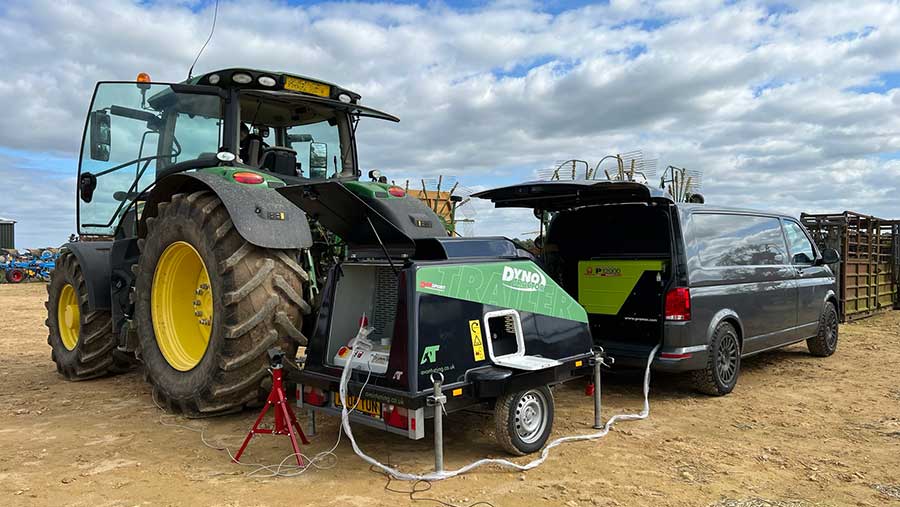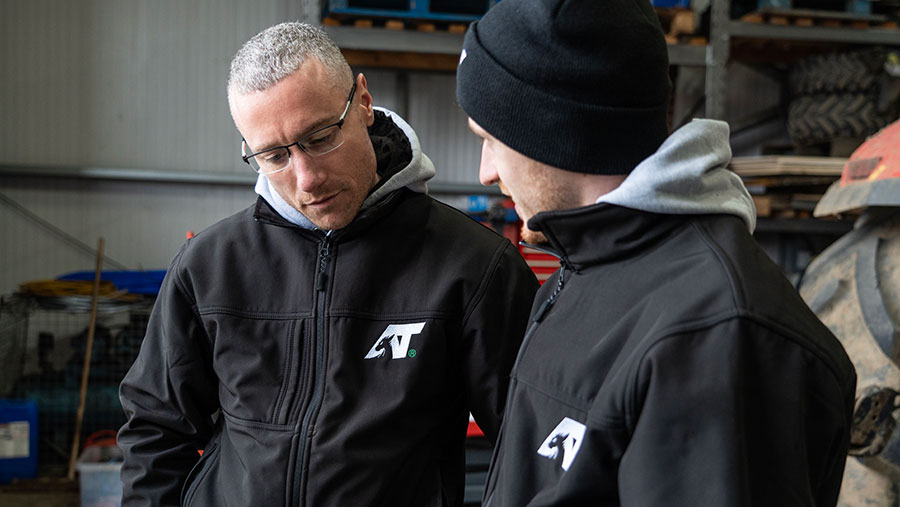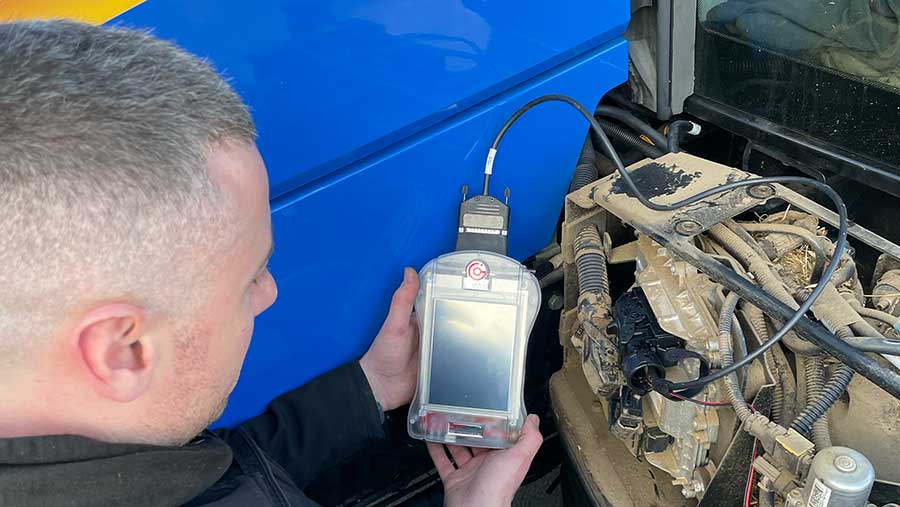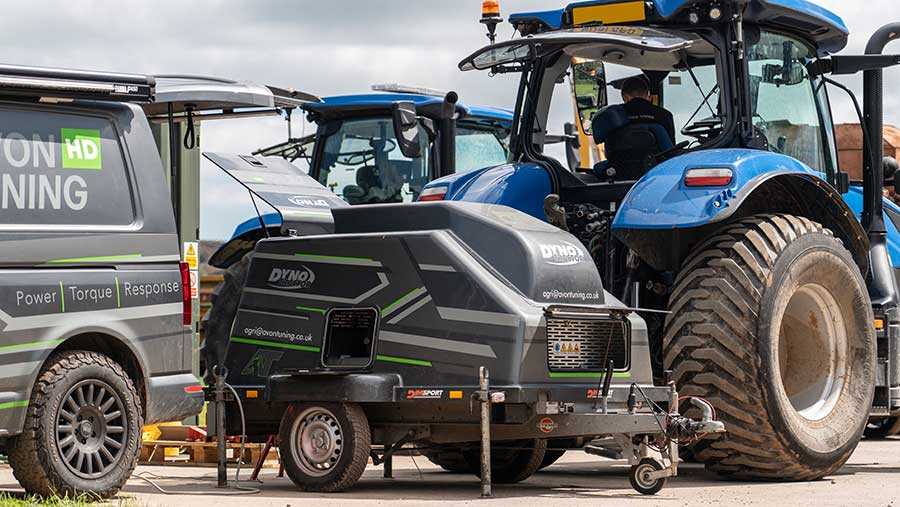Advertiser content
7 common agricultural engine remapping questions answered
 Joh Deere 6215R receiving a remap © Avon Tuning
Joh Deere 6215R receiving a remap © Avon Tuning More farmers are choosing sophisticated agricultural engine remapping technology to increase power, torque and work efficiencies from their tractors, combines and farm machinery.
Avon Tuning HD has been offering professional engine remapping since 2010 helping farmers and growers achieve increased productivity from agricultural machines.
Gareth Jones, director at Avon Tuning HD, says farmers and growers require increased output from their machines and remapping allows this in a professional, safe, and cost-effective way.

Gareth Jones, director at Avon Tuning HD © Avon Tuning
“Many farmers are keeping tractors longer due to the increased cost of replacement, so engine remapping is a cost-effective solution to allow existing machinery to operate wider implements and increase outputs. In many cases, fuel efficiency can be improved, making the cost of an Avon Tuning HD remap seem small in comparison to buying a new tractor.”
Avon Tuning HD has a network of over 150 authorised agents around the country installing remaps onto farm machinery.
Gareth Jones answers seven of the most common questions to help farmers interested in remapping.
What is engine remapping?
Engine remapping is the process of editing the engine control unit (ECU) to alter the characteristics and performance of the engine.
A typical remapping process would result in increased power and torque, however peak power does not necessarily have to be increased.
Operators may require more power in the mid-range, or additional torque at lower rpm, a remap can be customised to suit these needs.
How does it work?
Remapping is very different to fitting a chip or a tuning box, which would have accounted for a large proportion of the market around 12 years ago.
A tuning box or chip will interrupt and manipulate the signals sent from the ECU to the engine, whereas remapping alters the ECU output at source.
Editing at source is the way motorsport teams achieve huge powers from racing cars. It is much safer and allows the engineer greater control of the process.

© Avon Tuning
What parameters are changed?
A tractor has dozens of maps inside the ECU which need to be carefully edited to ensure smooth and safe power delivery. These maps fall into three main categories: fuel delivery, turbo boost pressure, safety limiters.
- Fuel delivery
Modern common rail diesel engines have injection pressures up to and sometimes in excess of 2,000 bar, whereas older machines would have been nearer 200 bar. The increased pressure gives a cleaner and more efficient burn.
However, increasing fuel delivery is not as simple as just increasing the pressure, accounting for injection duration and timing will maximise performance and efficiency.
- Turbo Boost Pressure
The extra fuel injected needs more oxygen to maintain the air-fuel ratio, which is achieved by increasing the turbo boost pressure.
Most modern tractors have electronically controlled turbo actuators allowing the ECU complete control of the boost pressure delivered to the engine.
- Safety Limiters
Modern ECU’s have multiple safety limiters integrated into the software – torque limiters, exhaust gas limiters, turbo pressure limiters – these protect the engine from mechanical failures or operator error.
They need to be carefully modified in a safe and methodical way during the remapping process. They should never be removed completely.
Does remapping invalidate a manufacturer’s warranty?
A manufacturer will almost certainly void a warranty if a remap has been carried out without approval, so it is advisable to speak with your dealer before any work is undertaken.
If there is a good understanding between you and the dealer, then it may be that a warranty can still be actioned.
There has been a substantial increase in demand over the past seven years for agricultural engine remapping.
Of all the machinery remaps we carry out, around 20% of the machines are still under a manufacturer’s warranty.
Can it increase fuel efficiency?
Depending on the specific model and the type of work, increasing fuel efficiency is often possible, however there are greater benefits to increasing work efficiencies.
Being able to use the same tractor on wider implements, or haul trailers up hills more efficiently, can help complete the same job in a shorter time.
A low-powered machine working at the top of its rpm range is being driven hard and could be using more fuel than it needs to.
However, by adjusting where and how the fuel is delivered to the engine will allow the tractor to power the same implements at lower rpm or in a higher gear, thus reducing fuel use.
Can remapping be unsafe?
No, as long as the installation is carried out by an experienced engineer and the map installed is edited by an experienced tuner. Getting good power in the correct way is hard and requires dedication and research.
There are shortcuts used to achieve similar results, but the long-term damage it does to the engine and running gear are costly.
It is also worth bearing in mind that if someone says they’ll provide you with a new map then it is worth questioning where that map has come from.
We take copies of the tractor’s original map and edit these, rather than installing a completely new map. We also save an original copy, so the machine can be returned to factory settings.
Can any tractor be remapped?
Yes, provided there is an ECU, and the ECU is not locked. New models require research about the range and Avon’s 150+ authorised agents will help us spot any weak components within a drivetrain.
For instance, if a model has a common transmission fault, this guides us when building new maps.
We will test all new models on a dyno to set the maps up for the customer’s requirements. For example, we can edit the fuel ratio throughout the rev range to see where the most efficient gains can be added.
We can also identify any restrictions in the fuel injection process, such as small injectors.
An area we are advising customers on lately is where horsepower ratings and engines cross over different model ranges.
For instance, a New Holland T6.175 Tier4a has the same 6.7-litre engine as the whole of the T7 range, so it is reasonable to suggest that the engine is capable of the same power output as the T7.250.

New Holland T6155 Newport receiving a remapping © Avon Tuning
However, the T6 range has smaller running gear and back end, so adding this kind of power would put stress on the components and cause premature failure.
Therefore, knowing what the model is capable of is an essential part of our work.
We use our experience to help customers be aware of those models with weaker transmissions and being sensible with any increases is key.
To find out more, get in touch with your local Avon Tuning HD authorised agent.
Provided by
Avon Tuning HD provides a bespoke engine remapping service to increase work efficiencies and safely improve performance for a wide range of agricultural machinery.
